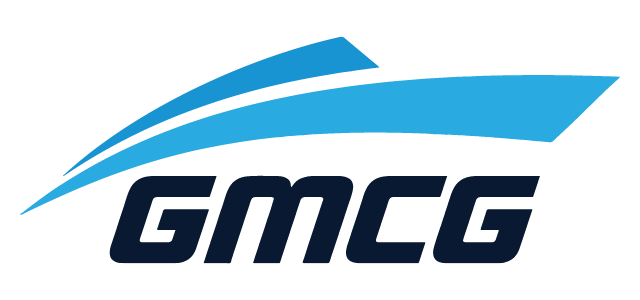BWM Convention: Discharge standard D-2 in full force
Between 8 Sep 2019 and Sep 2024, the BWM Convention will reach the second phase of its implementation where all ships will have to conform to the D-2 standard. In other words, after 15 years, the Ballast Water Management Convention is coming into full effect from this September since all ships must be fitted with D-2-compliant ballast water treatment system by the next IOPP renewal survey but not later than 8 September 2024.
Currently, around 25% of the fleet in international voyage already has a ballast water treatment system (BWMS), D-2 standard. The rest of the fleet, about 75%, complies with the D-1 standard (ballast water exchange). These ships are urged to install a BWMS, until the vessel’s next IOPP renewal survey, between 8 September 2019 and September 2024. This is important as there is no option to postpone the D-2 due date after 7 September 2019 if having an IOPP and conducting an international voyage.
In case a ship’s last IOPP renewal took place before 8 September 2014, there is the possibility that some ships could still have benefit on BWM D-2 due date after having completed their IOPP renewal before 8 September 2019 within HSSC (Harmonized System of Survey and Certification) renewal window.
A large amount of BWMS installations is expected in 2022, due to individual IOPP de-couplings from HSSC performed in 2017. Regarding the number of BWMS commissioning, in 2022 it is expected to be four times the amount compared to 2021 or 2023. However “USCG requirements might enforce an earlier BWMS installation”.
A filter and UV technology will be prevalent, as well as filter and chemicals. For the latter, this includes technologies such as electrolysis. Moreover, there are other methods as well, like ozone and inert gas, which could be chosen.
Filter and UV
Analyzing each of these technologies, the benefits that a system with filter and UV has, such as:
- Simplicity;
- No by-products;
- Certified (IMO and USCG);
- Low CAPEX;
- Salinity independent.
Nevertheless, its downsides include:
- Ballast and de-ballast treating;
- More than 40-60% water transmittance;
- Holding times.
Filter and Electrolysis
Continuing to filter and electrolysis, the advantages that this technology presents are:
- CAPEX competitive for large ballast vessels;
- Only treatment on intake;
- 1 BWT system → several BW lines;
- Effective treatment;
- Certified (IMO and USCG).
- As the previous technology, it has its disadvantages, which may be:
- Hydrogen by-product;
- Complex;
- Salinity dependent;
- Higher CAPEX;
- Holding time.
Chemical injection
As for chemical injection, this technology can be preferred because of its:
- Salinity independency;
- Large BW capacity;
- Low energy;
- Place on upper deck;
- 1 BWT system → several BW lines;
- Effective.
Nevertheless, it also presents:
- Costly operation;
- Need chemical supplies on route;
- Extra room;
- Hazardous chemicals.
Installing a BWTS scope
During the process of the installation of a BWTS scope, operators should bear in mind that the systems must be purchased and installed from October 28, 2020, while they should have the revised G8 certificate. This process however, is divided into sub-categories:
Approval Stage
During this stage, ships must gather all the final documentation for approval of Class. After that, the necessary documents identified via a questionnaire, depending on the purchased treatment system and the type of vessel. This work is also handled through e-mail correspondence.
Installation and Commissioning
The next step is the installation, which must take place according to approved documentation and TA Certificate. This process includes two steps:
1. Commissioning test;
2. Initial Survey for verification of the installation on board.
Regarding the latter, this relates to the:
- Installed components according to the bill of materials;
- Safety measures function as intended;
- By-pass of BWMS gives alarms and events are logged;
- Transfer of control from local to remote control panel meets DNV GL rules;
- Proper integration with ship’s alarm and control system.
Recommendations for the proper operation of BWTS
As BWMS are complex systems, proper crew training is essential for successful operation. Namely, the crew must understand the system design limitations. These may be:
- Type Approval Certificate;
- Determine the operation for a vessel’s operational routes;
- Salinity limitation for electro-chlorination systems;
- May have to store sea water before ballasting in areas with low salinity;
- High turbidity water with low UVT;
- If UVT is too low, the BWMS may not operate correctly.
What is more, the BWMS requires proper crew training for the right maintenance and repair of BWMS, as well.
Specifically, filters should be maintained in the correct way to prevent corrosion, while spare parts must be available on board, such as UV lamps, filter elements, and critical monitoring sensors.
Additionally, an active substance BWMS may have important consumption of neutralization agent, which must be sourced and supplied to the ship in time. Furthermore, TRO need to periodically replace reagents used by TRO monitor.
In a poll regarding what kind of systems operators use, the replies were the following:
- 38% use UV Lamps;
- 24% use electrolyses;
- 31% do not have a system yet.
Sampling and analysis
In May 2019, MEPC 74 approved amendments to Regulation E-1 of the BWM Convention. Namely, MEPC made the validation of biological efficacy of each BWMS installation mandatory, in accordance with the guidance for commissioning testing (BWM.2/Circ.70) by sampling and analysis. The amendments to Regulation E-1 will apply from in October 2021. In addition, MEPC also urged flag administrations to start with commissioning testing as soon as possible.
According to the guidance for commissioning testing, a sample of the inlet water, along with a representative sample of the water discharged at de-ballasting must be analysed. The validation is considered successful if the analysis shows that the discharge sample is not over the D-2 standard and the self-monitoring equipment indicates correct operation. A written report should also be produces, referring sampled volumes, methods and results.
Of course, as in any case, there are certain issues to consider, which can be summarized as following:
- Non-availability of test organisations at the time of commissioning;
- Location where the ambient water is not appropriate for the operational testing (e.g. salinity of ambient water is outside the system design limitations (SDL);
- Discharge sample exceeding the D-2 standard;
- Result of inadequate cleaning of ballast tanks and sediments causing contamination;
- Inadequate integration of the BWMS on board the ship.
Contingency Measures
In case the BWMS experiences a malfunction, well planned BWM contingency measures would enable shipowners to avoid unnecessary downtime.
Namely, in such a case, the crew is advised to have a repair plan, while for contingency measures the IMO guideline BWM.2/Circ. 62 should be followed. Another important thing to remember, is that the Port Authority of destination and the Flag Administration are usually to be informed regarding the malfunction of BWMS. If the ship does not inform the port, there is a risk of PSC detention. However, in case of malfunction and on advice by the Flag a ‘Condition’, a short term IBWMC should be issued, if D-2 is mandatory for the ship.
Regarding malfunctions that operators have experienced, a short poll, indicated that:
- 20% faced sensor failures;
- 19% faced filter clogging;
- 13% faced lamp issues;
- 47% had no experience in related malfunctions.
Concluding, as the updated BWM Convention is approaching, shipowners should make the necessary preparations in order to make their ships compliant. As always, correct planning and preventive measures, will save the ship a lot of costs and they will contribute towards making its operation safer.


